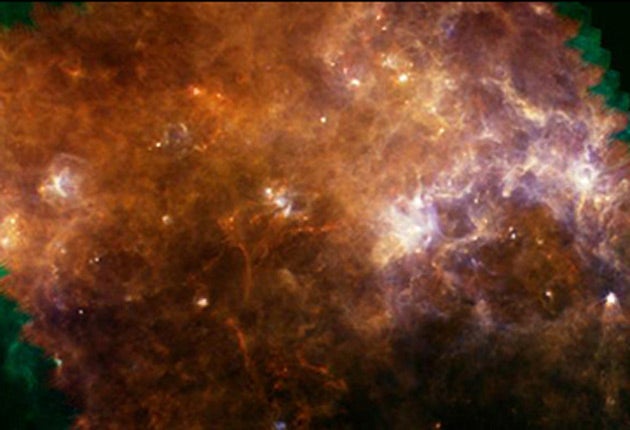'Hidden' Milky Way caught on camera

Your support helps us to tell the story
From reproductive rights to climate change to Big Tech, The Independent is on the ground when the story is developing. Whether it's investigating the financials of Elon Musk's pro-Trump PAC or producing our latest documentary, 'The A Word', which shines a light on the American women fighting for reproductive rights, we know how important it is to parse out the facts from the messaging.
At such a critical moment in US history, we need reporters on the ground. Your donation allows us to keep sending journalists to speak to both sides of the story.
The Independent is trusted by Americans across the entire political spectrum. And unlike many other quality news outlets, we choose not to lock Americans out of our reporting and analysis with paywalls. We believe quality journalism should be available to everyone, paid for by those who can afford it.
Your support makes all the difference.New images of our galaxy today showed a small part of the milky way in a new light.
A British scientist involved in obtaining the pictures said they showed the galaxy in "a very turbulent process", constantly forging new generations of stars.
The images were produced by the Herschel Space Observatory using, for the first time, the UK-led Spire camera in tandem with the satellite's other camera, Pacs.
Herschel, launched in May, was designed to view the universe at far infrared wavelengths and carries the largest telescope ever flown into space.
Together, the cameras not only reveal new material in the galaxy but provide astronomers with information about how much material there is, its mass, temperature and composition, and whether or not some of it is collapsing to form new stars.
Professor Matt Griffin, of Cardiff University, Spire's principal investigator, said: "We had high hopes for this kind of observation with Herschel, using the combined power of the two cameras to see the galaxy as never before.
"It's great to see that the observations work so well from a technical point of view, and that the scientific results are so spectacular.
"It appears that star formation in the galaxy is a very turbulent process."
The two instruments have imaged an area around 16 times as big as the size of the moon as seen from earth.
Professor Derek Ward-Thompson, also of Cardiff University, said: "The wealth of detail that is visible in these images is quite simply stunning.
"We are getting a view of the interstellar medium such as we have never seen before.
"This will help us to unravel the mysteries of star formation in a way that has never been previously possible. Herschel is certainly living up to all of our expectations."
Large areas of the milky way will be systematically surveyed by Herschel in this manner, helping astronomers to unravel the mysteries of star formation.
Dr Pete Hargrave, who led the team that helped build Spire, said: "I am staggered by the beauty of these images.
"We can see, in exquisite detail, the material from which stars are born.
"The fact that Spire and Pacs are working so well together is testament to the expertise and years of hard work put in by the instrument teams. We're all pretty chuffed!"
Join our commenting forum
Join thought-provoking conversations, follow other Independent readers and see their replies
Comments